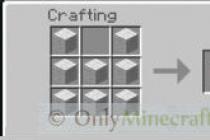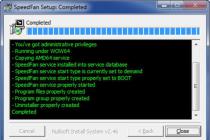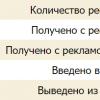information management automated
Automated information system (AIS) is a complex that includes computer and communication equipment, software, linguistic tools, information resources designed to collect, prepare, store, process and provide information, as well as system personnel providing support for dynamic information model some part of the real world to meet the information needs of users and to make decisions.
AIS combines the following components:
Language tools and rules used for selecting, presenting and storing information, for displaying a picture of the real world in a data model, for presenting the necessary information to the user;
Information fund of the system;
Ways and methods of organizing information processing processes;
A set of software tools that implement information conversion algorithms;
The complex of technical means functioning in the system;
Personnel operating the system.
Any AIS operates in an external environment, which is a source of input and a consumer of output information for AIS. Within the AIS, starting from the entrance to the system and ending with the exit from it, the information flow goes through several stages of processing.
With the help of AIS, multivariate calculations are provided, rational management decisions are made, including in real time, complex accounting and economic analysis are organized, reliability and efficiency of information received and used in management, etc. are achieved.
The main purpose of AIS is storage, provision effective search and transmission of information on relevant requests to best meet the information needs of a large number of users.
To the basic principles of automation information processes include: payback, reliability, flexibility, safety, friendliness, compliance with standards.
Payback means spending less money to get an efficient, reliable, productive system that can quick decision assigned tasks. At the same time, it is considered that the payback period of the system should be no more than 2-5 years.
Reliability is achieved by using reliable software and hardware, using modern technologies. Purchased funds must have certificates and (or) licenses.
Flexibility means easy adaptation of the system to changing requirements for it, to new functions being introduced. This is usually achieved by creating a modular system.
Security means ensuring the safety of information, regulation of work with the system, the use of special equipment and ciphers.
Friendliness lies in the fact that the system should be simple, easy to learn and use (menus, tips, error correction system, etc.).
AIS are diverse and can be classified according to a number of features related both to the system as a whole and to its individual elements. Each AIS is focused on a particular subject area. The subject area is understood as the area of problems, knowledge, human activity, which has a certain specificity and the range of objects appearing in it. At the same time, each automated system is focused on the performance of certain functions in its respective field of application. There are four types of AIS:
1. Covering one process (operation) in one organization.
2. Combining several processes in one organization.
3. Ensuring the functioning of one process on the scale of several interacting organizations.
4. Realizing the work of several processes or systems on the scale of several organizations.
When creating an AIS, it is advisable to unify the organized systems (subsystems) as much as possible for the convenience of their distribution, modification, operation, as well as training of personnel to work with the corresponding software. The development of AIS involves the selection of processes to be automated, their study, the identification of patterns and features (analysis), which helps to determine the goals and objectives of the system being created. Then the necessary information technologies are introduced (synthesis). For the successful implementation of design and organizational work, it is recommended to identify several prototypes of the designed object and the software and hardware installed on it. On their basis, develop several options. Then, alternative ones are selected from them, from which, finally, the best solution.
AIS usually uses automated workstations (AWP) based on personal computers, distributed databases, software oriented towards the end user.
The main purpose of automated information systems not only to collect and store electronic information resources, but also to provide users with access to them. One of the most important features of AIS is the organization of data search in their information arrays (databases). Therefore, AIS are practically automated information retrieval systems (AIPS) - software, designed to implement the processes of input, processing, storage, search, presentation of data, etc. AIPS are factographic and documentary.
1) Factographic AIPS usually use tabular relational databases with a fixed data structure (records).
2) Documentary AIPS are characterized by uncertainty or variable structure of data (documents). AIS shells are usually used for their development.
Ways to provide automated information systems and their technologies are software, technical, linguistic, organizational and legal support used or created in the design of information systems and ensuring their operation.
1) The software represents the tool environment of programmers, application programs for the corresponding computers and installed on them OS. These are programming languages, operating systems, network software, editors (text, links, spreadsheets, etc.), program libraries, translators, utilities, etc. The main ones are software complexes AIS - database management systems (DBMS). Their shells are automated information retrieval systems (AIPS) of wide application.
2) Technical support AIS includes means of input, processing, storage, search and transmission / reception of information. Input, processing and storage of data are standard components of a computer. The search for information is based on the use of special software. The means of information transmission are network and telecommunication equipment of computers, systems and means of communication.
3) Linguistic support usually includes:
Types, formats, structure of information (data, records, documents);
Language means of description (NDL, data dictionaries) and data manipulation (DML);
Classifiers, codifiers, dictionaries, thesauri, etc.
4) The organizational support of the AIS includes the structural subdivisions of the organization using it, which manage the technological processes and support the system's performance, as well as documentation to ensure the operation and development of the system.
5) Legal support of AIS is a set of legal norms regulating legal relations during the creation and operation of AIS. At the stage of development of AIS, it includes regulations related to contractual relations between the developer and the customer of the system, with the regulation of deviations in the system development process, with the provision of the development process with various resources. At the stage of operation of the system - determines its status in the management process, the legal provisions of the competence of individual AIS structures and the organization of their activities, the procedure for creating and using information in AIS, legal support for the safety of AIS operation. Legal support includes normative documents regulating the activities of the AIS.
An exemplary AIS scheme is shown in Figure 1.
Figure 1 - A variant of the diagram of an automated information system
Universal shells do not allow users to develop the system on their own. Special programs DBMS classes (ORACLE, MS SQL, ADABAS, Informix, etc.) are developed in such a way as to provide users with ample opportunities for their development. To provide the broad masses of users to open electronic information arrays, cooperation and integration of these resources is carried out.
Automated integrated information systems provide access to remote information and technical resources, as well as the ability for various categories of users to work with information that is heterogeneous in presentation forms. These include local, corporate and global networks.
AIPS, in terms of the tasks performed and the capabilities presented to users, can be both fairly simple (elementary reference) and very complex systems (expert and others providing predictive solutions).
So, the need to constantly increase the productivity and efficiency of workers, to produce more quality products, etc. first served as the basis for the creation of automated control systems for production processes, then automated control systems for enterprises.
Almost any automated system includes an automated information retrieval system. An automated information retrieval system is a set of software and hardware used to store, search and (or) manage data and information in order to meet the information needs of users. It is also designed to implement the processes of input, processing, and presentation of data.
The purpose of automation of information processes is to increase the productivity and efficiency of employees, improve the quality of information products and services, improve service and efficiency of user service. With its help, the time for completing tasks is reduced, technological processes are transformed and changed, new types of information services and products are provided. The main principles of automation of information processes include: payback, reliability, flexibility, security, friendliness, compliance with standards.
In order to provide access for the general public to open electronic information arrays, cooperation and integration of these resources is carried out, which provides access to remote information and technical resources, as well as the ability of various categories of users to work with information that is heterogeneous in presentation forms. These include local, corporate and global networks.
Thus, the experience of developing and implementing various classes automated systems showed high economic efficiency of their application. It is reflected in a good organization of labor and production, an increase in the accuracy of planning and implementation of the tasks set, in ensuring the rhythm of the work of an enterprise, reducing the share of manual labor, etc.
Currently, AIS is very popular. What it is and what is unique about it will be discussed in this article. It was created in the Republic of Bashkortostan to provide an integrated approach and automate numerous tasks.
Program functions
AIS will help solve many problems. What is it and what are its uses?
- maintaining an electronic journal of progress;
- control and accounting of attendance;
- provision of automated food accounting;
- calculation of parental payment;
- keeping an electronic diary;
- introduction of a non-cash form of payment for meals.
Indeed, AIS is multifunctional. What is meant by it and how it can help, education staff will be able to evaluate. The result of fruitful work on the project was the card product "Schoolchild's Card". It is an electronic identifier.
Program functionality:
- Easy access to public transport.
- Electronic pass to school.
- Payment for meals in the school cafeteria or buffet using an electronic wallet.
Not everyone knows what AIS "Education" is. The system is practical in that it takes into account all the requirements for information security, which are defined by the Federal Law on Personal Data. It has been put into commercial operation since October of this year. At present, the program has not yet spread so much, and few people know what AIS "Education" is. Those who have connected to the product get the opportunity to receive advisory and methodological support and support.
Features of the "Electronic Journal"
The automated information system "Electronic Journal" is absolutely free, practical and universal system. It is designed to maintain an electronic journal and diary.

The electronic journal was created taking into account the state requirements of the education and development program to automate the school process. The product helps to form a common communication space, where participants in educational activities receive information on issues of interest.
Advantages of the "Electronic diary"
What was the main thing in the development of the AIS "Education" section "Electronic diary"? Specialists adhered to the opportunity to work in close contact with direct customers. The advantage of the product is ease of use. It has been recognized many times as a system that can be operated intuitively thanks to its simple interface. AIS "Electronic diary" can be mastered by a teacher of any age. It features high performance and affordable user support, reliable operation.

Free version
It offers a huge number of functions.
- Can be driven electronic journal for complex educational complexes.
- The work of preschool units is provided.
- Educational institutions can completely switch to accounting for progress in in electronic format and forever forget about maintaining a paper journal.
- The program provides the function of generating a printed version of a standard journal at the end of the academic year.
- In the program, you can fill in data on additional education, home and family education.
- Thanks to a flexible system of parameter settings, it is possible to keep an electronic journal, taking into account the many features of the educational process carried out in educational institutions of various types.
- In the parameters, you can set up any grading system, classification of types of work, methods for calculating subtotals and certification rules.

Users very quickly understand how to work with the program and what AIS is. The product offers a huge number of functions that automate routine operations.
Compliance with the requirements
The program meets modern standards. It involves integration taking into account the services of the city or a specific region, meets the recommendations for keeping progress logs in electronic form and the requirements for the security of storing and processing personal data.
information products
Developers offer users a flexible choice of information system. It is able to ensure the full-fledged work of educational institutions and interaction with the parents of pupils.

Educational institutions can purchase an AIS product. What is and how to use the program on a free basis, you can find out after registration. It has all the necessary functions for a full-fledged work in high school.
For the work of the administration, the AWP "Zapuch" was developed. It will help facilitate the work in terms of planning and monitoring training activities. With its help, it will be easier to organize the certification process and solve other managerial tasks.
The module for preparing printed forms of certificates includes additional functions and services. They will help to more accurately solve specific problems in any educational institution.
AIS capabilities
To check an electronic or paper OSAGO policy, there is an AIS PCA database. It allows you to check the status of the form by its number. In addition, it is possible to determine the car insured according to a specific form, its license plate number, body number, VIN code, and find out why the insurance is not valid.
Checking the driver's KBM on the basis of the AIS RSA is popular. Using the bonus-malus coefficient, it is possible to determine the cost of an OSAGO policy. In 2013, it became impossible to enter a policy without requesting this coefficient on the base automated system Russian Union of Motor Insurers.
Multifunctionality of the "Electronic diary"
A free electronic diary has been developed for parents of students. Thanks to the system parental control access to all performance data. Information can be presented in the form of an SMS message, a report on email about comments and new marks, school news, progress monitoring and statistical analysis of tests.

The school electronic journal is a modern step in the field of information technology. Its main advantage is ease of use, an indispensable aid in automating the educational process. The product is free to use. Before you start using the program, it is useful to learn the features about the system, products, study the sections about the school, for parents, partners.
Product Advantages
Depending on the composition of the package, you can connect the school to a specific modification of the program. AIS "Education" "Electronic diary" is a free electronic journal, which has everything you need to work. Modules are enabled after registration in the system.
AWP "Zavuch" is unique system for solving problems. With its help, you can manage and monitor the educational process. It is intended for the administration of the educational institution. Additional function created for the needs of a particular educational institution.

Electronic journal/diary functions
Here are just the main ones:
- Give ratings.
- Adjust various grading systems.
- Customize symbols and signs for evaluation, double evaluations.
- Maintain job types and a set of types.
- Fix methodological associations.
- Limit the date the journal was edited.
- Manually adjust the editing ability.
Introduction
The concept of an automated information system and its structural components
Classification of automated information systems
Main functions of automated information systems
Conclusion
Bibliography
Introduction
Automation and the creation of information systems are currently one of the most resource-intensive areas of the technogenic society. One of the reasons for the active development of this area is that automation serves as the basis for a fundamental change in management processes that play important role in the activities of man and society. Control systems arise, the action of which is aimed at maintaining or improving the operation of an object using a control device (a set of means for collecting, processing, transmitting information and generating control signals or commands).
An information system is a system that provides authorized personnel with data or information relevant to an organization. The management information system, in general, consists of four subsystems: a transaction processing system, a management reporting system, an office information system, and a decision support system, including an executive information system, an expert system, and artificial intelligence.
Automated information system - an interconnected set of tools, methods and personnel used to store, process and issue information in order to achieve the goal.
Thus, an automated information system (AIS) is a collection of information, economic and mathematical methods and models, technical, software, technological tools and specialists, designed to process information and make management decisions.
The purpose of this work is to consider the essence of automated information systems.
1. The concept of an automated information system and its structural components
A system is understood as any object that is simultaneously considered both as a single whole and as a set of heterogeneous elements united in the interests of achieving the set goals. Systems differ significantly from each other both in composition and in main goals.
In computer science, the concept of "system" is widespread and has many semantic meanings. Most often it is used in relation to a set of hardware and software. The system can be called the hardware part of the computer. A system can also be considered a set of programs for solving specific applied problems, supplemented by procedures for maintaining documentation and managing calculations.
The addition of the word "information" to the concept of "system" reflects the purpose of its creation and functioning. Information systems ensure the collection, storage, processing, search, and issuance of information necessary in the process of making decisions on tasks from any area. They help analyze problems and create new products.
Information system - an interconnected set of tools, methods and personnel used to store, process and issue information in order to achieve the goal.
The modern understanding of the information system involves the use of a personal computer as the main technical means of processing information. In large organizations, along with personal computer part technical base information system may include a supercomputer. In addition, the technical implementation of the information system in itself will mean nothing if the role of the person for whom the produced information is intended and without which it is impossible to receive and present it is not taken into account, therefore
Automated information system (AIS) is a human-machine system that provides automated preparation, search and processing of information within the framework of integrated network, computer and communication technologies to optimize economic and other activities in various areas of management.
On this basis, various automatic and automated process control systems are created. A typical example of such systems can serve in communication - an automatic switching station. This system is controlled by technical devices processors or other simpler devices. The human operator is not included in the control loop that closes the connection between the object and the control element, but only monitors the progress of the technological process and intervenes as necessary (for example, in the event of a failure). The situation is different with the automated control system of the production process. In AS production processes, both the object and the control body is a single human-machine system, a person is necessarily included in the control loop. By definition, AS is a human-machine system designed to collect and process information necessary to control the production process, that is, to manage teams of people. In other words, the success of the functioning of such systems largely depends on the properties and characteristics of the life of the human factor. Without a person, the AS system cannot work independently as a production, since a person forms tasks, develops all types of supporting subsystems, and chooses the most rational solution from the computer-produced solutions. And, of course, a person, which is very important, is ultimately legally responsible for the results of the implementation of his decisions. As you can see, the role of a person is huge and irreplaceable. A person organizes a program of preparatory measures before the creation of the AS, therefore, among other things, special organizational and legal support is required.
The structure of the AIS is a set of its individual parts, called subsystems. A subsystem is a part of a system that is distinguished by some attribute.
The AS consists of two subsystems: functional and providing. The functional part of the AS includes a number of subsystems covering the solution of specific tasks of planning, control, accounting, analysis and regulation of the activities of managed objects. During the analytical survey, various subsystems can be identified, the set of which depends on the type of enterprise, its specifics, the level of management and other factors. For the normal operation of the functional part of the AU, it includes subsystems of the supporting part of the AU (the so-called supporting subsystems).
Classification of automated information systems
Systems, in relation to the AU, can be classified according to a number of criteria. For example:
by hierarchy levels (supersystem, system, subsystem, system element);
according to the degree of isolation (closed, open, conditionally closed);
by the nature of the ongoing processes in dynamic systems (deterministic, stochastic and probabilistic);
by type of connections and elements (simple, complex).
Systems are divided into primitive elementary (for them, automatic systems controls) and large complex ones. Since large and complex systems have the property of invisibility, they can be considered from several points of view. Therefore, there are also many classification features.
AS can be classified:
By level:
ACS Industry;
ACS Production;
ACS of the Workshop;
ACS of the Site;
APCS (technological process).
At the same time, depending on the level of service of production processes at the enterprise, the CIS itself or its component (subsystems) can be assigned to different classes:
Class A: systems (subsystems) for managing technological objects and/or processes.
Class B: systems (subsystems) for the preparation and accounting of the production activities of the enterprise.
Class C: systems (subsystems) for planning and analyzing the production activities of an enterprise.
Systems (subsystems) of class A - systems (subsystems) of control and management of technological objects and/or processes. These systems are typically characterized by the following properties:
enough high level automation of performed functions;
the presence of an explicit function of monitoring the current state of the control object;
the presence of a feedback loop;
the objects of control and management of such a system are: technological equipment; sensors; executive devices and mechanisms.
a small time interval for data processing (i.e., the time interval between receiving data on current state control object and the issuance of a control action on it);
weak (insignificant) time dependence (correlation) between the dynamically changing states of control objects and the control system (subsystem).
As classic examples of class A systems, we can consider:
SCADA - Supervisory Control And Data Acquisition (supervisory control and data accumulation);
DCS - Distributed Control Systems (distributed control systems);
Batch Control - sequential control systems;
APCS - Automated Control Systems for Technological Processes.
Class B systems are systems (subsystems) for preparing and accounting for the production activities of an enterprise. Class B systems are designed to perform a class of tasks that require direct human participation to make operational (tactical) decisions that affect a limited range of activities or a short period of operation of an enterprise.
In a sense, it is customary to refer to such systems as those that are at the level of the technological process, but are not directly related to the technology. The list of the main functions of systems (subsystems) of this class can include:
performance of accounting tasks arising in the activities of the enterprise;
collection, preliminary preparation of data entering the CIS from class A systems, and their transfer to class C systems;
preparation of data and tasks for automatic execution of tasks by class A systems.
Taking into account application functions, this list can be continued with the following items:
management of production and human resources within the accepted technological process;
planning and control of the sequence of operations of a single technological process;
product quality management;
storage management source materials and manufactured products by technological divisions;
maintenance and repair management.
These systems, as a rule, have the following characteristic features and properties:
short duration of data processing, ranging from several minutes to several hours or days;
the system has an impact on a short period of operation of the enterprise (ranging from a month to six months);
the presence of interfacing with systems of class A and / or C.
Classic examples of class B systems are:
MES - Manufacturing Execution Systems (production management systems);
MRP - Material Requirements Planning (material requirements planning systems);
MRP II - Manufacturing Resource Planning (manufacturing resource planning systems);
CRP - C Resource Planning (capacity planning system);
CAD - Computing Aided Design (computer-aided design systems - CAD);
CAM - Computing Aided Manufacturing (automated production support systems);
CAE - Computing Aided Engineering (computer-aided engineering design systems - CAD);
PDM - Product Data Management (automated data management systems);
SRM - Customer Relationship Management (customer relationship management systems);
all kinds accounting systems and so on.
One of the reasons for the emergence of such systems is the need to identify individual management tasks at the level of the technological division of the enterprise.
Class C systems are systems (subsystems) for planning and analyzing the production activities of an enterprise. Class C systems are designed to perform a class of tasks that require direct human participation to make strategic decisions that affect the activities of the enterprise as a whole. The range of tasks solved by systems (subsystems) of this class can include:
analysis of the enterprise's activities based on data and information coming from class B systems;
enterprise activity planning;
regulation of global parameters of the enterprise;
planning and distribution of enterprise resources;
preparation of production tasks and control of their execution.
the presence of interaction with the managing entity (staff) in the performance of their tasks;
interactivity of information processing;
increased duration of data processing, ranging from several minutes to several hours or days;
a long period of making a management decision;
the presence of significant temporal and parametric dependencies (correlations) between the processed data;
the system affects the activities of the enterprise as a whole;
the system has an impact on a significant period of operation of the enterprise (from six months to several years);
the presence of direct interface with class B systems.
The classic names for a class B system are:
ERP - Enterprise Resource Planning (Enterprise Resource Planning);
IRP - Intelligent Resource Planning (intelligent planning systems);
Decision type:
Information and reference systems that simply report information (“express”, “siren”, “09”);
Information-advising (reference) system presents options and evaluations according to various criteria of these options;
Information and control system, the output result is not advice, but a control effect on the object.
By type of production:
ACS with discrete-continuous production;
ACS with discrete production;
ACS with continuous production.
By appointment:
Military automated control systems;
Economic systems (enterprises, offices, managing power structures);
Information retrieval systems.
By areas of human activity:
medical systems;
Ecological systems;
Telephone communication systems.
By type of computers used:
Digital computers (TsVM);
3. Main functions of automated information systems
A process control system usually does a lot various functions, which can be divided into three large groups (Fig. 1):
collection and evaluation of technical process data - monitoring;
control of some parameters of the technical process;
connection of input and output data - feedback, automatic control.
Rice. 1. Main functions of the control system
Process monitoring, or gathering information about a process, is a basic function common to all control systems. Monitoring is the collection of values of process variables, their storage and display in a form suitable for the human operator. Monitoring is a fundamental property of all data processing systems.
Monitoring may be limited to only displaying raw or processed data on a monitor screen or on paper, or it may include more complex analysis and display functions. For example, variables that cannot be directly measured must be calculated or estimated from available measurements. Another classic feature of monitoring is checking that measured or calculated values are within acceptable limits.
When the functions of a process control system are limited to collecting and displaying data, all decisions about control actions are made by the operator. This type of control, called supervisory or remote control (supervisory control), was very common in the first computer-controlled process control systems. It is still used today, especially for very complex and relatively slow processes where human intervention is important. An example is biological processes, where a certain part of the observations cannot be performed using automation.
When new data arrives, their value is evaluated relative to acceptable limits. In a more advanced control system, several results can be combined based on more or less complex rules to check whether the process is in a normal state or has gone beyond some acceptable limits. In even more modern solutions, especially those built on expert systems or knowledge bases, the combined operational information from the sensors is combined with the estimates made by the operators.
Management is a function opposite to monitoring. In the literal sense, control means that computer commands are sent to actuators to influence the physical process. In many cases, process parameters can only be influenced indirectly through other control parameters.
A system that operates autonomously and without direct operator intervention is called automatic. An automatic control system may consist of simple control loops (one for each pair of input and output process variables) or more complex controllers with many inputs and outputs.
There are two main approaches to the implementation of feedback in computing systems. With traditional direct digital control (DDC, Direct Digital Control - DDC), the central computer calculates the control signals for the actuators. All monitoring data is transmitted in full from the sensors to the control center, and control signals - back to the actuators.
In Distributed Direct Digital Control (DDDC) systems, the computer system has distributed architecture, and digital controllers are implemented on the basis of local processors, i.e. located near the technical process. Computers of the upper control levels calculate the reference values, and local processors are mainly responsible for the direct control of the technical process, i.e. generation of control signals for actuators based on data local monitoring. These local computers include digital control loops.
A simpler and more archaic form of automated control is the so-called setpoint control. The computer calculates the reference values, which are then passed to conventional analog controllers. In this case, the computer is used only for calculations, and not for measurements or generation of control actions.
Remote monitoring and control systems are usually defined by the general name SCADA (from Supervisory Control And Data Acquisition - Remote control and data collection). SCADA is a very broad concept and can refer both to a fairly simple device implemented on a single computer, and to a complex, distributed system that includes a control center, peripheral devices and a communication system. The idea of SCADA includes the use of perfect means of display, data accumulation and remote control, most often understood as a dispatcher, i.e. "manual" control, but does not include regulation or control procedures; the latter, however, are very often included in delivered SCADA systems as core functions or as customer-selectable functions.
Application of the process database for monitoring and control
A medium or large control system has several hundreds or thousands of points of interaction with the technical process. It is practically impossible to process all relevant information with software modules written specifically for each of these points. Instead, a systematic approach is needed to process all inputs. Simple structuring of process parameters can be done on the basis of records, but for more complex cases it is necessary to use the apparatus of a full-fledged database with appropriate access methods.
To systematize and reduce the volume of process data, the nature of the relevant information must be considered. These are usually measured values or binary input/output data such as "on/off" or "normal/failure". Due to the regularity of this presentation, the input data can be processed by a universal data collection and interpretation program that works based on certain parameters for each object. The object description parameters are stored in the process database, which is the central element of the control system software. An example of the process database structure is shown in Figure 1. 2.
Programs for accessing information stored in the database include, among others, the following subsystems:
data entry and database interface;
data output, i.e. interface between the database and the output of the control computer or actuators;
data display;
interface for entering commands.
Advanced databases may include up to twenty descriptor parameters for each I/O object. Some of these specifiers are required and are found in every database implementation; the rest apply only under certain circumstances.
The process database gives consistency and structure to the stored data. Sensors and actuators in a process control system can be of a wide variety of types. Temperatures can be measured with a PTC resistor, a thermocouple, and a digital device. Accordingly, information from the sensors can be sent to the central processor both in the original format and in the form of data packets, possibly already converted to ASCII codes. With the help of the process database, each measured value is processed independently and converted to a single form. Application modules only need to access the database and do not need information about the features of sensors and actuators. Replacing one sensor with another or new model does not require reprogramming of any modules - it is enough to enter new control parameters into the database. Database upgrades can be performed online without shutting down the control system.

Rice. 2. Database structure of the real-time process and modules for data access
An abstract description and separation of measurement results from the methods by which they are obtained is useful if some characteristics of these quantities may change. There is no need to modify the programs or stop the control system - just redefine the conversion parameters stored in the database.
Process database access, queries and protocols
Access to the information contained in the database is performed using three basic operations that can be combined - selection, projection and sorting. Strictly speaking, these operations are formally defined only for relational databases, however, they can be used for databases of a different structure.
A selection defines an operation to retrieve only records from a database that meet specified criteria.
Projection -. this is a list of fields of interest in the database record.
Sorting means sorting the selected records according to some criteria.
The combination of three basic operations generates a large number of options for data processing and analysis. Usually the database contains too much information, which is completely impossible to perceive and analyze, however, with the right tools, any necessary problem-oriented information can be extracted. Database access operations are these tools.
The operation of retrieving information from a database is called a query.
To use database access programs effectively, a subset of the data of interest must be selected in advance. Typically, only a very limited number of database samples are of interest in any given situation, so a small set of standard queries can be defined in advance. Such requests are called protocols. Protocols are usually queries where projection and sorting operations (what information to display and in what order) are predefined, and only specific parameters need to be specified before they are run.
Alarm protocols.
The most important function of the control system is the rapid detection of invalid modes and notification of the operator. Each change of state classified as an emergency must be recorded in special file- accident log - indicating the time of the event.
A special request - the emergency protocol - is used to search for and display all database objects that are currently in an emergency state. This protocol is extremely important for maintenance and repair.
Service protocols.
Another important component of the work of a manufacturing enterprise is Maintenance instruments and equipment. Service examples include replacing worn tools, calibrating sensors, checking fuel and lubricant levels. Maintenance operations can be even more difficult, up to dismantling entire units to check the condition and clean their components. This type of maintenance is called preventive maintenance and is performed to keep the equipment in optimum operating condition. Repairing defective or failed devices is called corrective maintenance.
Data analysis and trends.
An important task in industrial production is the accounting of productivity and statistical indicators. The information contained in the database can serve as the primary source for statistical processing procedures. The main statistical operation is the summation of indicators over time, i.e. calculation of increasing total values for given time intervals - day, week, month. Summary indicators can be displayed in the form of statistical tables containing other values calculated on their basis - indicators of efficiency and quality.
Management operations performed using the database
In some control systems, the database stores indications of automatic actions that are performed in certain situations. A special database table indicates at what value of some parameter the execution command is called. This table works like a PLC, although the data it uses is at a higher level of abstraction and may include derived values.
There is an important practical difference between automated functions and process control using a database and systems based on PLCs or local controllers. The latter are installed directly near the inputs and outputs of the process and can quickly respond to changes in the input data. The database of a hierarchical control system, on the other hand, has a long response time, since the information must go up and down the communication channels and go through several stages of processing. Therefore, it is advisable to program automatic responses at the host level only when several parameters need to be compared and this operation cannot be performed locally. The associated control loops cannot be implemented as a distributed direct digital control system. In this case, it is necessary to take into account the probability of a significant overload of communication channels.
Conclusion
automated information system
As a result of this work, the following conclusions were drawn.
A system is understood as any object that is simultaneously considered as a whole.
An information system is an interconnected set of means, methods and personnel used to store, process and issue information in order to achieve a set goal.
AIS is a human-machine system that provides automated preparation, search and processing of information within the framework of integrated network, computer and communication technologies to optimize economic and other activities in various areas of management.
A subsystem is a part of a system that is distinguished by some attribute. At the same time, AIS consists of two subsystems: functional and supporting.
Among the supporting subsystems, information, technical, mathematical, software, organizational and legal support are usually distinguished.
Systems, in relation to automated control systems, can be classified according to a number of criteria. Systems are divided into primitive elementary (automatic control systems are built for them) and large complex ones.
Bibliography
Gates B. Business at the speed of thought. - M.: EKSMO-Press, 2005. - 73 p.
Gustav O., Janguido P. Digital automation and control systems. - St. Petersburg: Nevsky Dialect, 2005. - 557 p.
Drucker P. Tasks of management in the XXI century. - M.: Williams, 2006. - 153 p.
Computer science. Basic course / Simonovich S.V. and others - St. Petersburg: Peter, 2005. - 640 p.
Simonovich S., Evseev G., Alekseev A. General informatics. - M.: AST-Press, 2006. - 592 p.
Wilson S., Maples B., Landgrave T. Software design and development principles. - M.: Russian Edition, 2005. - 249 p.
Ustinova G.M. Management Information Systems / Textbook. - St. Petersburg: DiaSoft UP, 2004. - 368 p.
Along with the concepts of "management system", "management information system", which were discussed above, there are also the concepts of "automated system, AS" and "automated information system, AIS". These systems belong to the class of complex systems, as a rule, not so much due to the large physical dimension, but due to the ambiguity of the structural relationships between their components. Within the framework of systems analysis, complex systems are studied by breaking down into elements: it is assumed that a complex system is a whole, consisting of interrelated parts that cannot be determined a priori, but are built or selected in the process of decomposition (physical or conceptual) of the original system. Therefore, before proceeding to the study of AIS, in particular economic information systems, we will consider the terminology and approaches to the classification of information systems (IS) in the general case.
It should be noted that IP, depending on the level of consideration, can be:
- analysts or informants;
- information and analytical divisions of organizations;
- information services or information institutions;
- world information systems and networks of information exchange .
Stages of development of information systems. The history of the development of IS and the purpose of their use at different stages are presented in Table. 3.1.
Table 3.1. Changing the approach to the use of information systems
|
Period of time |
The concept of using information |
Type of information systems |
Purpose of use |
|
Paper flow of settlement documents |
Information systems for processing settlement documents on electromechanical accounting machines |
Increasing the speed of document processing. Simplify invoice processing and payroll processing |
|
|
Basic assistance in preparing reports |
Management information systems for production information |
Speeding up the reporting process |
|
|
Management control of implementation (sales) |
Decision support systems. Top management systems |
Development of the most rational solution |
|
|
Information is a strategic resource providing a competitive advantage |
Strategic information systems. Automated offices |
Firm survival and prosperity |
Properties of information systems(fundamental principles of construction and operation):
- the principle of the first person - determines the right to make a decision and the order of responsibility at various levels of management;
- the principle of a systematic approach - in the process of designing an IS, an analysis of the control object as a whole and its control system is carried out. It provides for a single input of information into the system and its repeated use; unity information base;
- complex software;
- the principle of reliability - is provided in various ways, for example, by duplicating system elements or their redundancy;
- the principle of continuous development - it is envisaged to expand the system without major organizational changes;
- the principle of economy - the benefits of a new IP should exceed the costs of it;
- the principle of compatibility - taking into account the organizational structure of the enterprise, as well as the interests and qualifications of people.
Any IS can be analyzed, built and managed on the basis of general principles building systems;
The following classification of IP is based on a number of essential features that determine functionality and construction features modern systems; the volume of tasks to be solved, the technical means used, the organization of functioning, etc. were also taken into account (Fig. 3.6).
Rice. 3.6.
By stored data type IS are divided into factual and documentary. Fact systems designed to store and process structured data in the form of numbers and texts. Various operations can be performed on such data.
IN documentary systems information is presented in the form of documents consisting of titles, descriptions, abstracts and texts. Search in unstructured data is carried out using semantic features. The selected documents are provided to the user, and data processing in such systems is practically not performed.
Based on degree of automation of information processes in the management system of a firm (organization), IS is divided into manual, automatic and automated.
Manual IS are characterized by the absence of modern technical means of information processing and the performance of all operations by a person.
IN automatic And C, all information processing operations are performed without human intervention.
automated And C assume participation in the process of information processing of both a person and technical means, and the computer plays the main role in performing routine data processing operations. It is this class of systems that corresponds to the modern concept of "information system" and the modern concept of "automated system".
GOST 34.003-90 provides the following definition.
Automated system (AS) - is a system consisting of personnel and a set of means for automating its activities, realizing information technology installed functions.
Complex of automation means (KSA)- the totality of all components of the AU, with the exception of people. AC User - a person participating in the functioning of the AS or using the results of its functioning.
In its turn, automated information system (AIS) can be defined as a complex of automated information technologies that is part of an IS intended for information service - an organized continuous technological process of preparing and issuing scientific, managerial and other information to consumers used for decision-making, in accordance with their needs to maintain effective activities.
Processes in AIS, components and structures. Figure 3.7 displays the structure of a typical cumulative AIS process, or a representation of AIS as a set of functional subsystems - collection, input, processing, storage, search, distribution information.
Obviously, many elements of the circuit are alternative:
object model may be absent or identified with a database (DB), which is often interpreted as information-

Rice.
rational model of the subject area, structural (for the case tabular, factual databases) or meaningful (for the case documentary databases). In expert systems (ES) as a model of an object (subject area) appears knowledge base(BZ), which is procedural development concepts of the database (in its essence, the database is a non-procedural object);
- object model and database may be absent (and, accordingly, the processes of storing and searching for data) if the system performs dynamic transformation of information and the formation of output documents without saving the initial, intermediate, resulting information. If there is also no data conversion, then such an object is not an information system (it does not information activities), and should be assigned to other classes of systems (for example, an information transmission channel, etc.);
- data entry and collection processes are optional because all necessary and sufficient for the functioning of the AIS, the information may already be in the database and the composition of the model, etc.
Depending on the nature of data processing AIS are divided into information retrieval and information decision.
Information retrieval systems produce input, systematization, storage, issuance of information at the request of the user without complex data transformations. For example, IS for library services, reservation and sale of tickets on transport, hotel reservations, etc.
Information-decisive systems carry out, in addition, operations of information processing according to a certain algorithm. By the nature of the use of the output information such systems are usually divided into managers And advisers. Result Information managers AIS is directly transformed into human-made decisions. These systems are characterized by computational tasks and processing of large amounts of data. For example, AIS planning of production or orders, accounting. Advisers AIS generate information that is taken into account by a person and taken into account in the formation of management decisions, and does not initiate specific actions. These systems imitate intellectual processes of knowledge processing, not data (for example, expert systems).
Depending on the scope of application distinguish the following classes of AIS.
Organizational management systems - designed to automate the functions of managerial personnel of both industrial enterprises and non-industrial facilities (hotels, banks, shops, etc.). The main functions of such systems are: operational control and regulation, operational accounting and analysis, long-term and operational planning, accounting, sales and supply management, and other economic and organizational tasks.
Process control systems(TP) - serve to automate the functions of production personnel for the control and management of production operations. Such systems usually provide for the presence of advanced means for measuring the parameters of technological processes (temperature, pressure, chemical composition, etc.), procedures for monitoring the acceptability of parameter values and regulating technological processes.
Computer-Aided Design Systems(CAD) - designed to automate the functions of design engineers, designers, architects, designers when creating new equipment, structures or technologies. The main functions of such systems are: engineering calculations, creation of graphic documentation (drawings, diagrams, plans), creation of project documentation, modeling of designed objects.
Integrated (corporate) AIS - are used to automate all the functions of a company (corporation) and cover the entire cycle of work from activity planning to product sales. They include a number of modules (subsystems) operating in a single information space and performing the functions of supporting the relevant areas of activity.
Analysis state of the art The IP market shows a steady growth trend in demand for organizational management information systems. Moreover, the demand continues to grow for integrated systems. Automation of a single function, such as accounting or sales of finished products, is considered a milestone for many enterprises.
In integrated AIS allocate functional And providing subsystems. Functional subsystems provide information services for certain types of activities that are characteristic of structural divisions of an enterprise or management functions. The integration of functional subsystems into a single system is achieved through the creation and operation of supporting subsystems.
Functional subsystem is a complex of tasks with a high degree of information exchanges (links) between tasks. In this case, a task is understood as a certain information processing process with a well-defined set of input and output information. The composition of the functional subsystems is determined by the nature and characteristics of the automated activity, industry affiliation, form of ownership, and the size of the enterprise. The division of IS into functional subsystems can be based on various principles: subject; functional; problematic; mixed (subject-functional).
Table 3.2. Functional subsystems allocated according to the subject principle
|
management |
Functional subsystems |
|||
|
Production |
Supply |
|||
|
Strategic level |
New products and services. Research and development |
Production capacity. Technology Choice |
material sources. Commodity forecast |
financial sources. Choosing a tax payment model |
|
Tactical |
Analysis and planning of sales volumes |
Analysis and planning of production programs |
Analysis and planning of purchase volumes |
Analysis and planning of cash flows |
|
Operational level |
Processing customer orders. Issuing invoices and invoices |
Processing production orders |
Warehouse operations. Purchase orders |
Book keeping |

Rice. 3.8.
Using subject principle allocate subsystems responsible for managing individual resources: sales management, production management, financial management, personnel management, etc. At the same time, subsystems consider solving problems at all levels of management, ensuring the integration of information flows along the vertical (Table 3.2).
Application functional principle }














